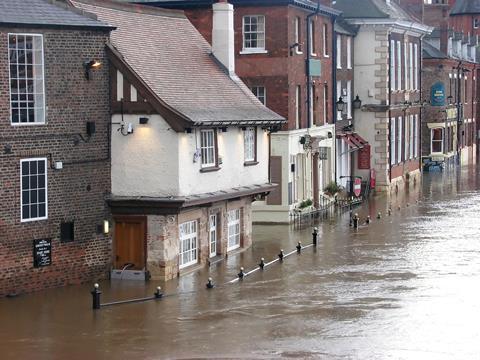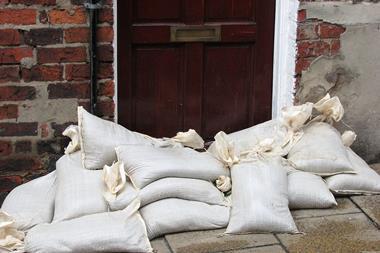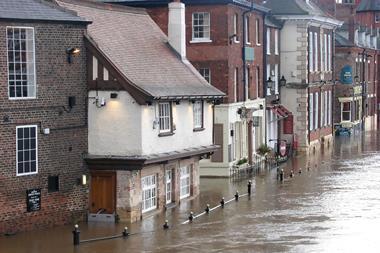Hundreds of thousands more homes at risk of flood than modelled

The plan to create a claims pool and limit premiums for homes built in flood plains could be unsustainable because it vastly underestimates the number of properties at risk as a result of climate change, warn academics from the London School of Economics (LSE).
The government’s Flood Re proposal assumes that about 500,000 properties in the UK will need to be covered by the scheme, which will cap premiums for at-risk homes.
But the LSE study points out that according to the government’s own climate change risk assessment, as many as 800,000 homes could be at a significant risk of coastal or river flooding in a decade, with the number rising to 1.5 million by 2050.
Increasing pressure
“The design of the Flood Re scheme has not taken into account adequately, if at all, how flood risk is being affected by climate change.
“For this reason, it is likely to be put under increasing pressure and may prove to be unsustainable because the number of properties in future that will have a moderate and high probability of flooding has been significantly underestimated,” said Dr Swenja Surminski in the paper.
The LSE has submitted its research to the Department for Environment, Food and Rural Affairs (Defra) as part of a consultation on the policy, which closed this month. Defra will publish responses to the consultation in October.
ABI estimate
According to the consultation document, the estimate of 500,000 properties was provided by the ABI and independently reviewed.
Under the plans, Flood Re will be run and financed by insurers as a not-for-profit fund that will cover the cost of flood claims from high-risk homes. It will charge member firms £180m a year, the equivalent of a £10.50 levy on annual household premiums.
Insurers will pass the flood risk element for high-risk households to the fund, and premiums will be capped and linked to council tax bands.
Hosted by comedian and actor Tom Allen, 34 Gold, 23 Silver and 22 Bronze awards were handed out across an amazing 34 categories recognising brilliance and innovation right across the breadth of UK general insurance.











































No comments yet